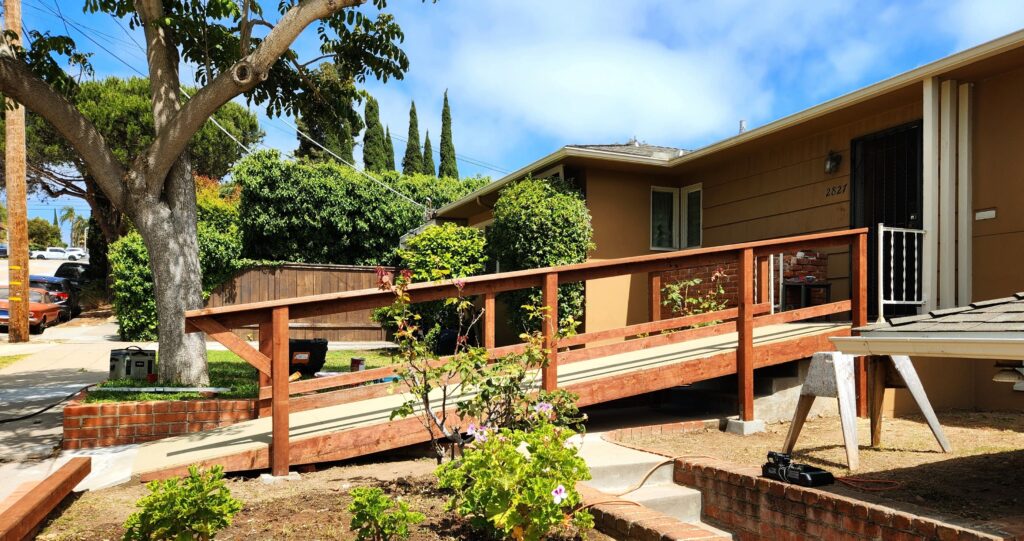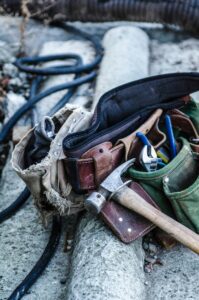Why Aging in Place Matters
No one likes the fact that we inevitably are gonna get old. Our sight diminishes; muscles lose their strength, the bones ache, and the memory goes somewhere else. We get to watch our loved ones go through it then we get the privilege of going through it ourselves.
Navigating our way through this life to an old age is an accomplishment in and of itself, and as we or those we love near the twilight of our life and choose to age in place, we can ensure that we do so with dignity, comfort, and safety. Preparing your home to better accommodate aging in place might be a better choice than the alternative of aging with strangers in a strange place.

A study done between 1992 and 2006 found that 65% of people who were residing in nursing homes had lengths of stay under a year and 53% less than 6 months. These folks didn’t just move somewhere else; they moved on if you catch my drift.
My guess is that most of us would prefer to age in place—to stay in our home or the home of a loved one who is willing to take on the responsibility of caring for us—as we finish our journey through this life. There’s comfort in the familiar—the smell of your own kitchen, the sound of birds outside your window, the pictures on the walls that remind you of a lifetime of memories. Aging in place allows us to maintain a sense of identity, dignity, and independence that’s often lost in institutional settings.
More importantly, being close to loved ones—children, grandchildren, friends, and neighbors—can dramatically improve our emotional well-being. Studies show that older adults who maintain strong social connections experience less depression, slower cognitive decline, and even live longer. Aging in place gives us the gift of staying connected to those who matter most while living in a space that feels like home.
Start Early: Age in Place and Prepare Before the Need Arises
How can this be done? Well, as the boy scouts say, “Be Prepared.” It is much easier to prepare one’s home for aging in place before a real need arises than after and having to rush to get a bunch of home modifications done after something happens. So, what can we do? Let’s start with the easy stuff and work our way up.
Preventing Falls: Flooring, Ramps & Handrails
Tripping and falling are a concern for all as we get up there in our age. The first thing we do is get rid of all those trip hazards like area rugs and loose cords. If walkers are in use, getting rid of carpet is not a bad idea and replacing it with tile or a better choice, some nice commercial-grade LVP flooring.
Both options are better suited for “clean ups” as they are waterproof and slip-resistant if the right product is selected. Ramps up steps and over thresholds make moving inside and outside so much easier if one is in a wheelchair, walker, or shuffles their feet like my father-in-law. Handrails down the hallway are a good way to assist and are easy to install and remove when the time is right. These small home changes make a big difference when preparing to age in place.
Door Modifications for Greater Accessibility
Arthritis sucks, our hands stop working and we can’t grab and hold on to things like we used to. Opening doors gets harder the older we get—changing the doorknobs to ADA lever handles is a quick and easy fix.
A typical home has a 2668 (30”x80”) door into rooms and bathrooms. A standard ADA door is 3068 (36”x80”) and is the standard for care homes, hospitals, and businesses. Removing the old doors at the critical entrances then reframing and installing new ADA doors should be easy enough for a skilled contractor.
Wider doors are essential to successfully age in place, especially for those using walkers or wheelchairs. Keep in mind that resizing doors may require electrical work, drywall repair, and painting. A good contractor should include these in their bid and not surprise you with additional cost, although there is always a chance there is a problem hiding in the wall. ADA doors will make moving from room to room that much easier for you or your loved one.
Considering Stair Lifts for Multi-Level Homes
Touching briefly on stair lifts—there are plenty of mobility/medical supply stores that can help you with these far better than I can. If you are in need of a stair lift, I recommend a quick search for a local store near you for expert advice and installation. These are excellent additions for multi-level homes where aging in place is the goal.
Upgrading the Bathroom for Safety and Independence
Converting a master bath into an ADA-compliant bathroom is easier because of the extra space, but even a standard bathroom can work with good planning.
Toilet Height and Grab Bars
Let’s start with the toilet, as the right one will make doing your business less troublesome. Make sure the toilet height is right for you; the standard height is 14-16 inches and comfort height (ADA compliant) is 17-19 inches. The shape is also important, smaller petite folks may prefer the round bowl while us larger folk might prefer the elongated bowl, which is something you are gonna have to decide.
Now that we have the toilet situated it’s grab bar time, one on either side is ideal but not always practical. You may need to install grab bars that fold up and out of the way next to the toilet with a vertical bar in front of the toilet to assist with getting up and down. Whatever the situation there is always a solution.
These updates are vital to creating a bathroom that supports aging in place.
Floors, Vanities, and Sinks
Making sure there is a good non-slip tile on the floor is also essential to keep the rugs and mats out of the bathroom, where they can be a trip/fall hazard. Removing the vanity (if possible) and installing a wall-mounted sink with the correct type of faucet will help those who are in wheelchairs have better access to the sink.
Showers and Tubs
Moving on into the shower\tub area, there are many options and differing costs related to this subject and warrants its own post, but a quick rundown is good for now. Removing tubs and showers and replacing them with a barrier free shower pan or a damless shower floor system, the latter being much higher in cost. Installing a shower head with a separate wand or combining the two, there are just so many options. A bench is essential, whether it is built in and tiled or is a folding chair that is installed after the tile is in, once again, many options.
Grab bars configured to your needs are a must; a good place to start is at least 1 horizontal bar the length back wall and 1 shorter vertical bar on each of the 3 walls to assist with moving in and out of the shower.
You Don’t Have to Do This Alone
Preparing to age in place might seem like a daunting task, but with good advice, good planning, and a good contractor, it doesn’t have to be overwhelming.
If you’re looking to start the process for yourself or a loved one, we here at EMP Construction (DBA EMP Handyman and Renovation) are ready to assist.




